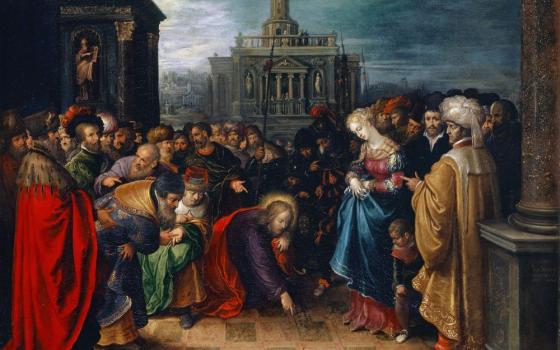THE POPE WHO QUIT: A TRUE MEDIEVAL TALE OF MYSTERY, DEATH, AND SALVATION
By Jon M. Sweeney
Published by Image Books, $14
During the late Pope John Paul II’s long, drawn-out illness, one of the FAQs was, inevitably, can a pope resign? The answer, of course, was yes. A pope has done so, and therefore one might do so again.
Practically every commentator at the time seemed to be aware that Celestine V (1294) had given up the papal office. As the distinguished historian Maurice Powicke long ago remarked, it is a well-known story. Author Jon Sweeney takes issue with the Powicke view, but the story is known to anyone who has ever opened a history of the papacy. It is, nonetheless, a story worth retelling.
In the long sede vacante following the death of Pope Nicholas IV (1288-92), Charles II of Sicily was desperate for a pope, any pope, who would ratify his secret treaty of La Junquera. A monk, Peter Morrone, was conveniently at hand. The king did not write Morrone’s letter to the cardinals in their prolonged conclave, but he may well have inspired it. The letter precipitated Morrone’s election as Celestine V.
The big question of Celestine’s pontificate is, did Peter Morrone -- as he once was and after his pontificate returned to being -- jump from the throne, or was he pushed?
Sweeney spends a good many of his 250 pages describing the spiritual milieu in which Celestine was formed. He emphasizes Morrone’s holiness and love of solitude. Sweeney’s conclusion necessarily follows: Celestine left the papal office because he judged he could not fulfill it. The only proper thing for a holy man to do, therefore, was to resign (not a scruple that seems to have worried too many Roman pontiffs).
The author then points out that Celestine was canonized in fairly short order, which Sweeney regards as evidence of holiness. It is more likely Celestine’s canonization was a means of legitimizing the only significant act for which he is known, his resignation.
 Insofar as Celestine was pushed from the throne, the cardinal who did the pushing, Benedetto Gaetani, succeeded him to become Boniface VIII (1294-1303). Boniface -- arguably a bigger disaster than the naive Celestine could ever have been -- insisted that no one could be saved except through obedience to the pope.
Insofar as Celestine was pushed from the throne, the cardinal who did the pushing, Benedetto Gaetani, succeeded him to become Boniface VIII (1294-1303). Boniface -- arguably a bigger disaster than the naive Celestine could ever have been -- insisted that no one could be saved except through obedience to the pope.
Sweeney several times insists that Celestine was the only pope to quit. That is distinctly debatable. Sweeney lists all the pontiffs who have been murdered -- he has a preference for the gory over the likely -- but mentions only one other quitter, Benedict IX (1032-44; 1045; 1047-48; died circa 1056), who, as he correctly records, sold the papacy to his godfather, but then claimed it back again. Benedict might well be described as a serial quitter, having left the chair of Peter three times, though that doesn’t merit a mention here. Then there was the first John XXIII (there have been two of them). John XXIII No. 1 (1410-15) resigned and returned to being plain Cardinal Baldassare Cossa. Sweeney dismisses him as an antipope.
Sweeney also has St. Louis IX, king of France (1214-70), setting off on a crusade to fill his new Sainte-Chapelle in Paris with relics rescued from the Holy Land. Louis did indeed set off, on two crusades. Neither made it to the Holy Land, but those crusades were not in pursuit of relics for Sainte-Chapelle. These, most notably the crown of thorns, he purchased from a cash-strapped Baldwin, the Latin king of Constantinople.
There are rather too many mistakes for comfort. The Muslim philosopher Averroes (Ibn Rushd, 1126-98) may have an Arabic name but he acquired his learning in Spain, not in the East. Albert the Great (circa 1200-80) may indeed have taught at Paris, but only briefly. He spent most of his life in the Dominican studium at Cologne, Germany. And it’s true the pallium may be an important part of papal liturgical attire, but from the seventh century on it has also been worn by metropolitans. Given that Sweeney knows so much, it may be that these are not mistakes at all but an odd way of putting things.
This book is written in a style that would not make great demands on the reading ability of an 11-year-old. Not that many 11-year-olds could be persuaded it was worth dipping into a volume on papal history. If any did, however, the said 11-year-olds might be occasionally seriously misled.
Historians cannot always get things right, but they should strive mightily not to get things wrong.
[Michael Walsh recently revised the Oxford Dictionary of Popes.]



